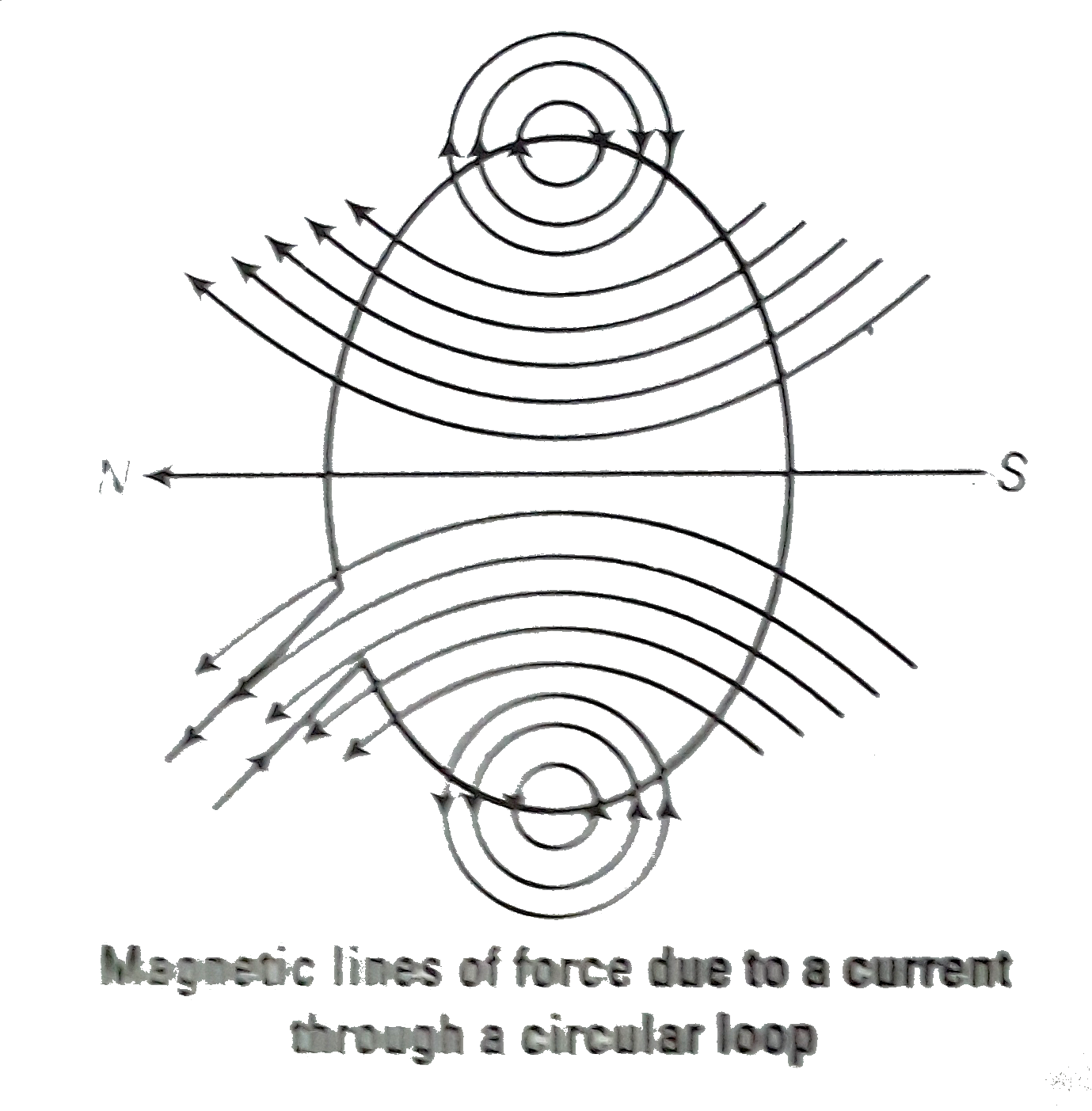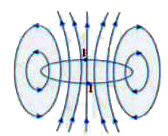Explain with the help of a labelled diagram the distribution of magnetic field due to a current through a circular loop. Why is it that if a current carrying coil has n turns, the field produced at any point is n times as large as that produced by a single turn?
The magnetic field pattern due to a circualr coil is shown in the given figure. At every point of current carrrying circular loop the conentric cicles representing the magnetic field around it becomes larger and larger as we move away from the wire. At the centre of the loop the field appears as straight line

The magnetic field proeduced by current carrying circular wire at a given point , depend on
(i) Amount of current flowing through the wire The strength of magnetic field (B) due to current carrying circular wire is directly proportional to the amount of current (I) flowing through it.
i.e., B∝I
(ii) Number of turns of the cicular wire The strength of the magentic field due to current carrying wire is directly wire is directly proportional to the number of turns (N) of the wire.
i.e., B∝N
If there isa circular coil having n turns, field produced is n times as large as that produced by a single turn. It happens because the current in each cicular turn has same direction and the field due to turn just adds up.
Topper's Solved these Questions
Similar Questions
(a) With the help of a labelled diagram, explain the distribution of mgnetic field due to a current through a circular loop. Why is it that if a current carrying coil has n turns the field produced at any point is n times as large as that produced by a single turn?
(b) Draw a pattern of magnetic field formed around a current carrying solenoid. What happens to the magnetic field when the current through the solenoid is reversed?View Solution(a) With the help of a labelled diagram, explain the distribution of mgnetic field due to a current through a circular loop. Why is it that if a current carrying coil has n turns the field produced at any point is n times as large as that produced by a single turn?
(b) Draw a pattern of magnetic field formed around a current carrying solenoid. What happens to the magnetic field when the current through the solenoid is reversed?View Solution
Knowledge Check
- Question 1 - Select One
The magnetic field due to current carrying circular coil having n turns is
An2 times as large as that produced by a single turnBn times as large as that produced by a single turnC12 -times as large as that produced by a single turnDwill be same as that produced by a single turn - Question 2 - Select One or More
The magnetic field produced due to a current through a circular loop depends directly on ............ .
Aradius of the loopBcurrent passing through itCresistance of the wireDthickness of the wire
Describe the magnetic field due to current through a circular loop.
View SolutionWhy is it that the magnetic field of a current carrying coil having n turns, is 'n' times as large as that produced by a single turn (loop)?
View SolutionExplain with the help of the pattern of magnetic field lines the distribution of magnetic field due to a current carrying a circular loop
View SolutionMagnetic Field Due To Current Carrying Circular Loop
View SolutionDepict the direction of the magnetic field lines due to a circular current carrying loop.
 View Solution
View SolutionWith a neat labelled diagram, describe the pattern of magnetic lines of force due to a current through a circular loop. Also explain how the magnetic field depends on the number of turns (n) in the loop.
View Solution

